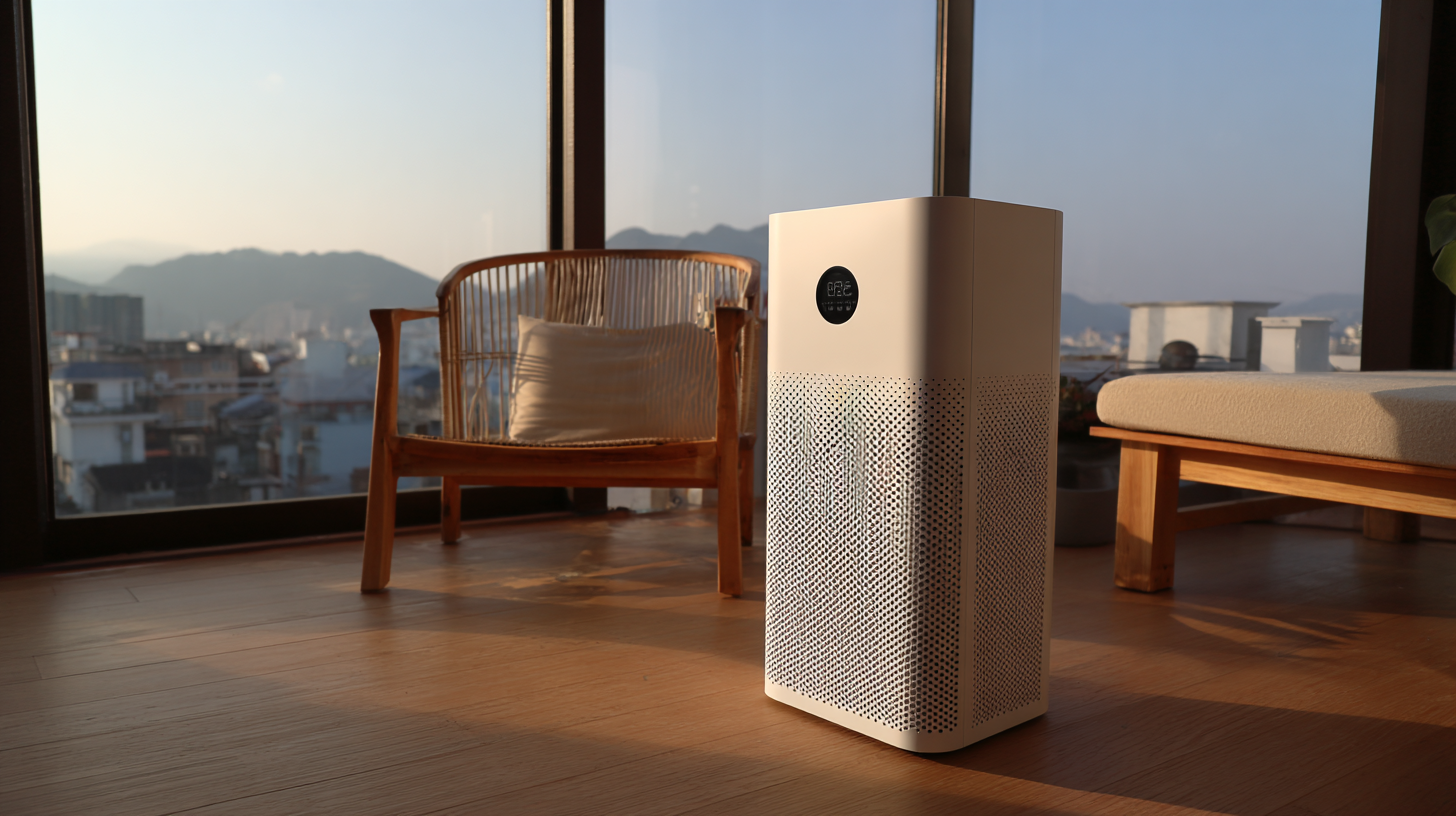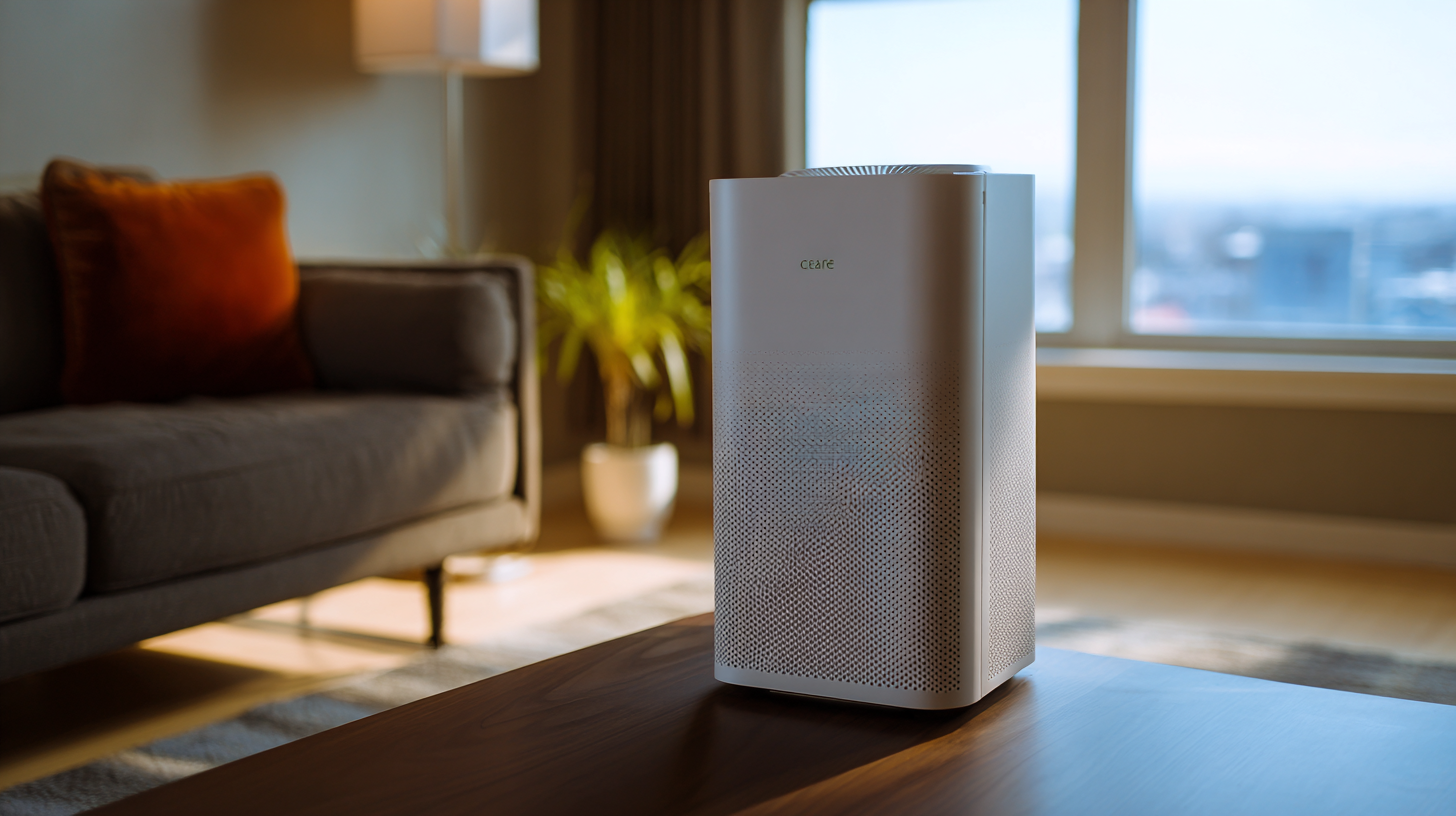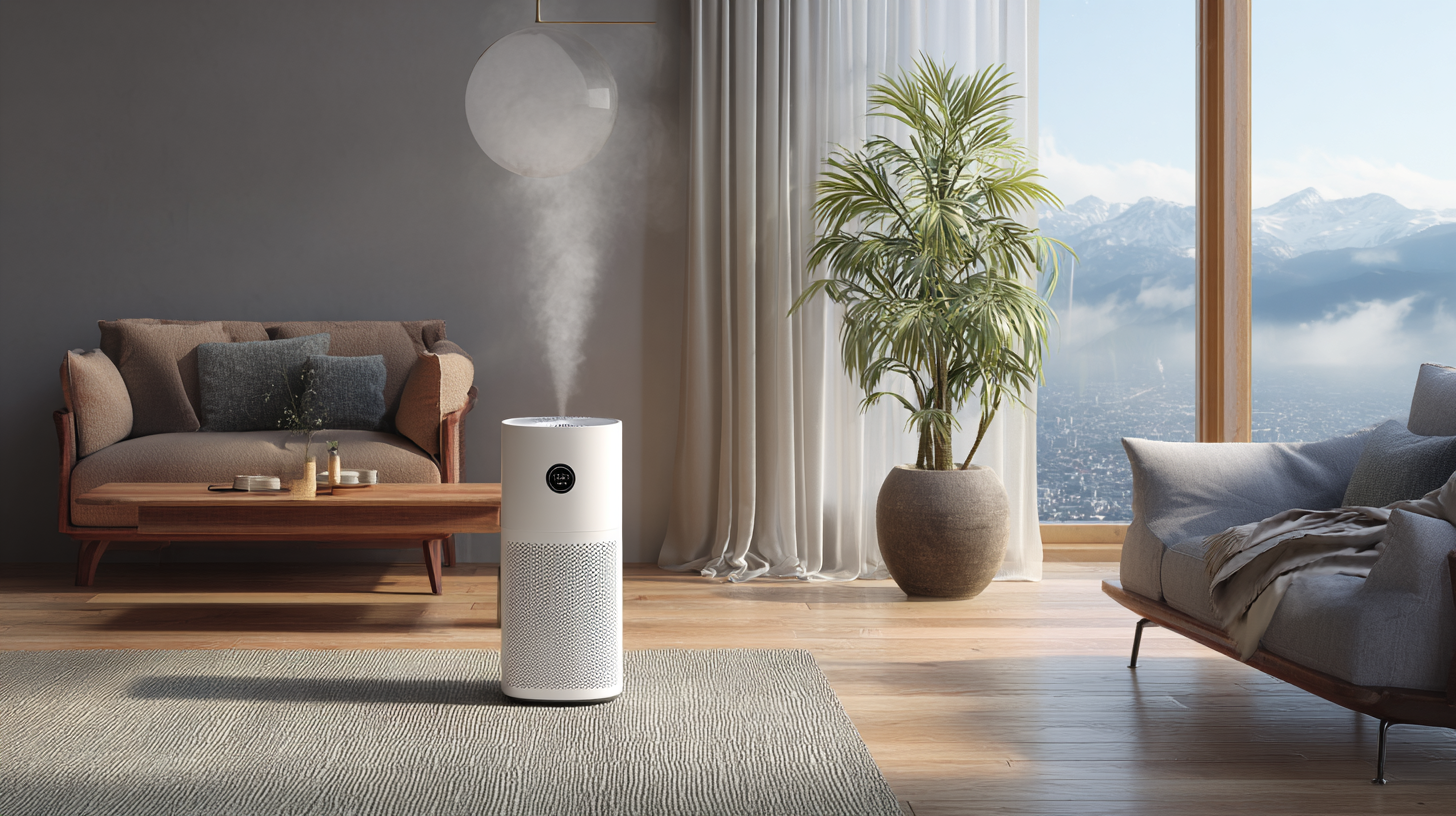
Unlocking the Secrets: In-Depth Technical Specs of the Best Clean Air Purifier and How to Choose the Right One
In today's world, where air pollution is increasingly becoming a pressing concern, investing in a high-quality Clean Air Purifier has never been more crucial. With countless options available in the market, each boasting different technologies and features, it can be overwhelming to determine which one truly meets your needs. This blog aims to demystify the technical specifications behind the best Clean Air Purifiers, offering readers an in-depth look at critical parameters such as CADR ratings, filter types, and energy efficiency. Additionally, we will provide a comprehensive guide on how to choose the right Clean Air Purifier based on your specific environment and lifestyle. By unlocking the secrets of these essential devices, you will be empowered to make an informed decision, ensuring that you and your loved ones breathe cleaner, healthier air.

Understanding Air Purifier Technology: Key Features That Matter
 When selecting an air purifier, it's crucial to understand the key features that can influence its performance and effectiveness. One of the primary aspects to consider is the type of filter used. HEPA filters are renowned for their ability to capture 99.97% of particles as small as 0.3 microns, making them ideal for trapping allergens, dust, and even certain bacteria. However, some purifiers also incorporate activated carbon filters, which excel at removing odors and volatile organic compounds (VOCs), contributing to a more comprehensive air cleaning process.
When selecting an air purifier, it's crucial to understand the key features that can influence its performance and effectiveness. One of the primary aspects to consider is the type of filter used. HEPA filters are renowned for their ability to capture 99.97% of particles as small as 0.3 microns, making them ideal for trapping allergens, dust, and even certain bacteria. However, some purifiers also incorporate activated carbon filters, which excel at removing odors and volatile organic compounds (VOCs), contributing to a more comprehensive air cleaning process.
Another important feature to look for is the Clean Air Delivery Rate (CADR), which measures the efficiency of an air purifier in removing smoke, dust, and pollen. A higher CADR indicates better performance, so it's wise to select a model that suits the size of your room. Additionally, consider air changes per hour (ACH)—a metric that shows how many times the purifier can filter the entire volume of air in a space. A unit with a high ACH rating is more effective for ensuring consistently clean air, particularly in high-traffic or allergen-prone areas. Understanding these technical specs can significantly enhance your air purification experience, leading to healthier indoor environments.
Comparing Air Purification Methods: HEPA vs. Activated Carbon vs. UV Light
When it comes to air purification methods, three main technologies often come into play:
HEPA filters,
activated carbon,
and
UV light.
High-Efficiency Particulate Air (HEPA) filters are renowned for their exceptional ability to capture particles as small as 0.3 microns with an efficiency of 99.97%. According to a report by the Environmental Protection Agency (EPA), HEPA filters are effective at removing dust, pollen, and pet dander, making them a preferred choice for those with allergies or respiratory issues.
Activated carbon, on the other hand, excels in its ability to adsorb volatile organic compounds (VOCs), odors, and harmful gases from the air. A study published in the Journal of Environmental Science and Technology showed that activated carbon can reduce specific chemical pollutants by up to 90%. This makes it an ideal choice for households dealing with smoke, paint fumes, or strong odors where traditional filtration methods may fall short.
UV light purification operates differently by using ultraviolet light to kill bacteria, viruses, and mold spores. The CDC has reported that UV-C light can effectively inactivate numerous pathogens, thus significantly improving indoor air quality. For optimal results, many air purifiers combine these methods, utilizing HEPA for particulates, activated carbon for gas, and UV light for microbial threats, providing a comprehensive solution to indoor air pollution.
Evaluating CADR Ratings: What They Reveal About Air Purifier Performance
When choosing the best air purifier, understanding the Clean Air Delivery Rate (CADR) is crucial. CADR ratings provide a quantifiable measure of an air purifier’s efficiency in removing particles like dust, smoke, and pollen from the air. A higher CADR indicates better performance, making it easier for consumers to compare different models. Ideally, you want to select an air purifier with CADR ratings that match the size of the room where it will be used; for instance, for larger spaces, look for units with CADR ratings above 300.
When evaluating CADR ratings, consider not only the numbers but also the specific pollutants each purifier targets. Air purifiers often receive separate CADR ratings for smoke, dust, and pollen, allowing you to choose one that best suits your needs. To enhance your air quality effectively, you’ll want a purifier with high CADR ratings across all categories relevant to your environment.
**Tips:** Always check the manufacturer specifications for recommended room sizes that align with CADR ratings. Additionally, consider the filter replacement frequency, as a high-quality filter can maintain CADR performance over time. Lastly, remember to assess noise levels, especially if you'll be using the purifier in a bedroom or home office.
Decoding Filter Lifespan: How to Maximize Efficiency and Cost-Effectiveness
When it comes to maintaining a clean indoor air environment, understanding the filter lifespan of air purifiers is crucial. A recent report from the Association of Home Appliance Manufacturers (AHAM) indicates that the average lifespan of HEPA filters can range from 6 to 12 months, depending on usage and air quality conditions. It's essential to monitor the filter replacement schedule to maintain optimal performance. Regularly changing filters not only enhances the purifier's efficiency but also safeguards against pollutants that can exacerbate health issues like asthma and allergies.

Maximizing the efficiency of your air purifier isn't just about changing filters; it's also about selecting the right model for your needs. According to a study by the Environmental Protection Agency (EPA), purifiers with activated carbon filters can effectively remove odors and harmful gases from the air, while HEPA filters are most effective against particulate matter. Investing in a model with both types of filters can provide comprehensive air purification over time, thereby extending the overall cost-effectiveness of your purchase. By ensuring your equipment is fitted with the right filters, you'll not only enhance air quality but also get the best return on investment, making your air cleaning efforts financially sound.
Selecting the Best Clean Air Purifier for Your Space: Room Size and Noise Levels
When selecting the best clean air purifier for your space, one of the most critical factors to consider is the size of the room where it will be used. Air purifiers are designed for specific coverage areas, typically measured in square feet. For smaller rooms, such as bedrooms or home offices, a compact purifier may suffice. However, for larger spaces like living rooms or open-concept areas, it's essential to choose a unit with a higher Clean Air Delivery Rate (CADR) to ensure effective filtration and circulation.
Another vital aspect to consider is noise level. Many air purifiers come with multiple fan speeds, which can impact the noise they produce. If you're planning to place the purifier in a sleeping area or study, a quieter model is essential to maintain a peaceful environment. Look for units specifically designed to operate quietly, often labeled as "whisper-quiet" or featuring a "sleep mode." Balancing room size and noise levels will help you choose the right air purifier, ensuring cleaner air without compromising your comfort.
